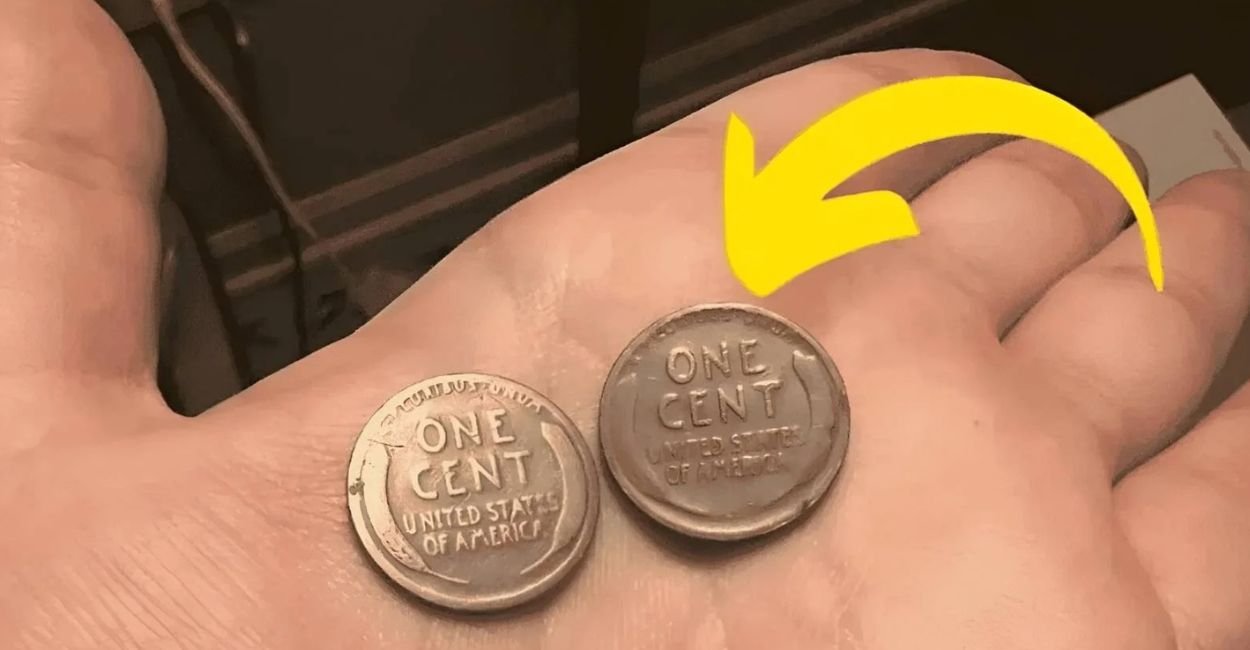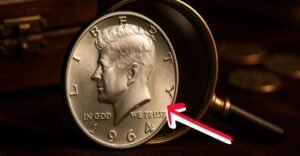Picture this: a quiet Sunday service, a simple offering plate passed around, and inside? Not just loose change, but a glittering piece of history worth $1.8 million. Sounds like a movie plot, right? But this real-life tale from a U.S. church proves that fortune can drop into the most unexpected spots—like a donation box meant for good deeds. In the fascinating world of coin hunting, where old pocket money turns into payday dreams, stories like this ignite curiosity worldwide.
The Magic of Rare Coins: Why They’re Worth a Closer Look
Coins aren’t just for buying coffee—they’re mini museums of the past. In simple terms, numismatics (the hobby of collecting coins) turns metal discs into valuable artifacts. What makes them special? Things like super-low production numbers, tiny factory slip-ups, or links to big moments in time. Most coins in your pocket are worth exactly 25 cents or a dollar, but rarities? They can skyrocket to millions. This church find is a perfect example: a forgotten beauty that blended in with pennies, waiting for the right eyes. For families, investors, and trivia lovers, these tales blend luck with learning, proving history’s value never fades.
Spotlight on the $1.8 Million Star: Quick Facts Table
Let’s break down the basics of this jaw-dropping discovery without the jargon. This coin fits the bill of elite U.S. treasures from bygone eras. Here’s an easy-reference table:
| Highlight | Easy Explanation |
|---|---|
| Coin Type | A scarce U.S. gold piece, likely a $20 Double Eagle from the late 1800s or early 1900s—think elegant designs of Lady Liberty |
| Worth | Up to $1.8 million at top auctions, fueled by bidder frenzy |
| Rarity Factor | Only a tiny batch ever made; many vanished over time due to melting or loss |
| Condition | Almost brand-new look—no dings, with that fresh-from-the-mint shine |
| Historical Tie | Minted during America’s growth spurt, capturing tales of expansion and innovation |
These details show why experts buzz: it’s not just gold; it’s a snapshot of yesteryear, polished to perfection.
The Surprise Drop: How It Landed in a Church Box
Every epic story needs a twist, and this one’s starts humbly. During a routine collection at a local U.S. church—think wooden pews and hymnals—the volunteers emptied the donation box. Amid the mix of bills and coins, one stood out: a heavy, golden disc that didn’t quite match the modern quarters. No fanfare, no clues—just pure chance. How did it get there?
Theories abound: maybe a kind soul, inheriting it from a relative, tossed it in as an anonymous gift, unaware of its worth. Or perhaps a collector, facing tough times, chose charity over cash. Churches see all sorts of offerings, but this? It turned a weekly chore into worldwide news, reminding us that generosity can unearth buried riches.
Cracking the Code: Verifying a Potential Jackpot
Spotting a rare coin is step one; proving it’s the real deal is the adventure. Once the church folks realized this wasn’t ordinary, they wisely paused. No rubbing it clean or pocketing it quick—instead, they called in pros. Authentication involves high-powered tools like microscopes and X-rays to check metal purity, design sharpness, and hidden marks.
Services such as PCGS (Professional Coin Grading Company) or NGC (Numismatic Guaranty Corporation) swoop in, scoring it on a scale where “gem uncirculated” means top marks. For this coin, the verdict? A resounding yes—pristine and legit. Skipping these steps risks fakes or value drops, but here, careful handling preserved its sparkle and story.
The Ripple Effect: Who Wins from This Windfall?
This find didn’t just pad a piggy bank; it sparked joy across circles. Churches now double-check donations, turning “loose change” routines into treasure hunts. Coin enthusiasts geek out over the rarity, adding it to “holy grail” lists. Smart money folks see it as a win for alternative investments—rare coins often beat stocks in steady growth. And history buffs? They cherish how it whispers of America’s past, from gold rushes to design geniuses like Augustus Saint-Gaudens. No named heroes here, but the takeaway? One small act rippled into inspiration, showing everyday people can steward extraordinary legacies.
Common Blunders to Skip When You Strike Gold
Excitement tempts errors, so heed these warnings:
- No Home Polishing: That shine might fade forever—oils and cloths strip the natural glow, halving value overnight.
- Glove It Up: Bare fingers leave invisible grime; use soft holders to keep it pristine.
- Verify First: Self-diagnosing? Risky—fakes abound. Pros prevent pricey pitfalls.
- Hold for High Bids: Rushing a sale? Nah. Auctions maximize the magic.
Smart moves keep the fortune flowing.
Your Starter Kit: Hunting Rare Coins Like a Pro
Feeling the itch to investigate? You don’t need a metal detector—just curiosity. Here’s a beginner’s blueprint:
- Dig into Drawers: Raid attics, old wallets, or family tins. Target pre-1933 gold or silver pieces—they pack real metal punch.
- Magnify the Mystery: A cheap loupe (tiny magnifying glass) reveals date doubles, edge bites, or mint symbols.
- Shield from Harm: Pop into plastic sleeves, stash in cool, dry spots. Light and wet are foes.
- Build Your Know-How: Free apps and sites list “key dates”—years with low runs. Start with U.S. classics.
- Tap the Experts: Share pics online or at shows; many give free peeks before grading.
Practice turns “maybe” into “mine!” Who knows—your couch cushions could cough up cash.
Why These Finds Fuel Dreams in Today’s World
As of 2025, with markets wobbling and tech booming, rare coins stand tall as reliable rocks. They’ve clocked 8-12% yearly returns historically, outpacing inflation without the daily drama. This church story? It’s a beacon of hope, blending faith, fate, and finance. It nudges us to value the overlooked, turning donation drives into discovery quests. In a swipe-right era, these tactile treasures reconnect us to craft and chance, proving the past pays dividends.
Conclusion: From Offering Plate to Opportunity—Your Hunt Awaits
The saga of the $1.8 million coin tucked in a church donation box is pure poetry: a symbol of unintended kindness yielding unintended wealth. It flips the script on “small change,” urging us to pause, peer closer, and protect potential prizes. For churches, collectors, or casual keepers, it’s a call to curiosity—handle with heart, verify with vigilance, and who knows? The next big reveal might grace your path. So, next time you drop a dime for good, remember: miracles mix with the mundane. Start scanning, stay savvy, and let history hand you a win.
FAQ: Decoding Church Coin Surprises and Rare Finds
What kind of coin was the $1.8 million church discovery?
It’s likely a rare U.S. $20 Double Eagle gold coin from the late 1800s or early 1900s—super scarce with a stunning Liberty design.
How does a coin end up in a donation box like that?
Could be an anonymous gift from an heirloom owner, a collector’s quiet contribution, or a forgotten family piece—pure serendipity!
Should I clean a suspicious coin I find?
Never—cleaning erases the protective layer, crashing value. Pros use safe methods only when needed.
Other big donation or lost-coin stories?
Yep, like the $4 million Double Eagle in a parking lot or silver dollars unearthed in attic stashes—history loves hide-and-seek.
How to appraise my own rare coin?
Snap clear photos, hit up PCGS or NGC sites for grading quotes, or visit local coin shops. Free initial chats abound.
Are rare coins smart buys in 2025?
Totally— they’ve delivered solid gains for decades, low-risk fun for portfolios. Research trends before diving in.




